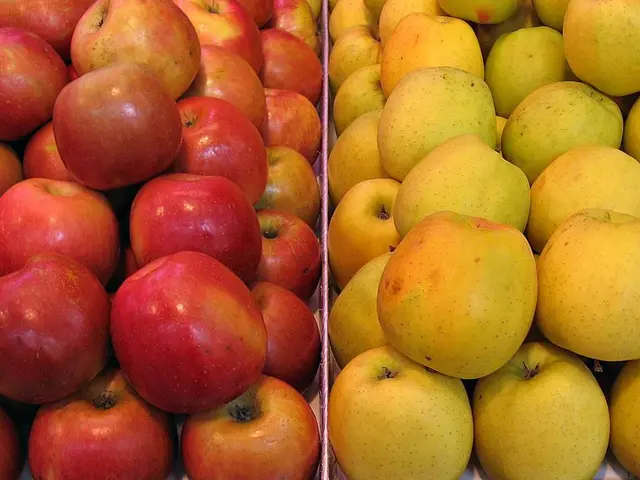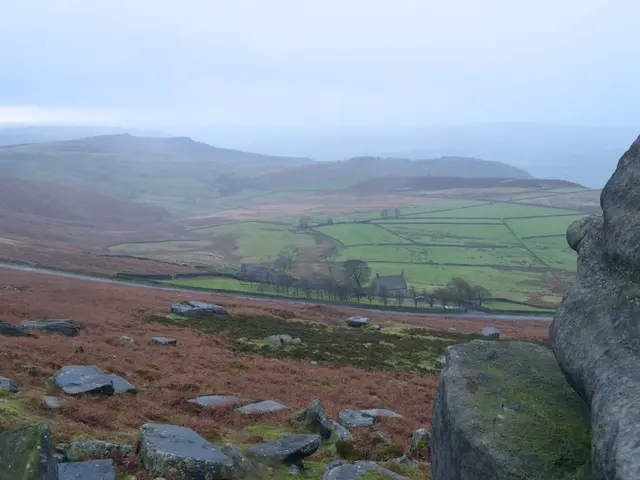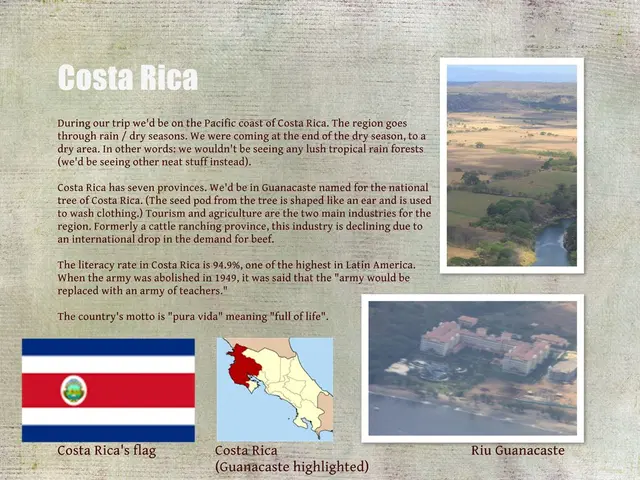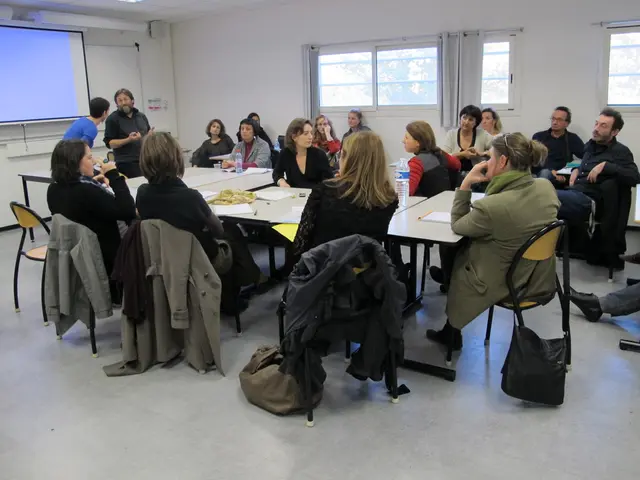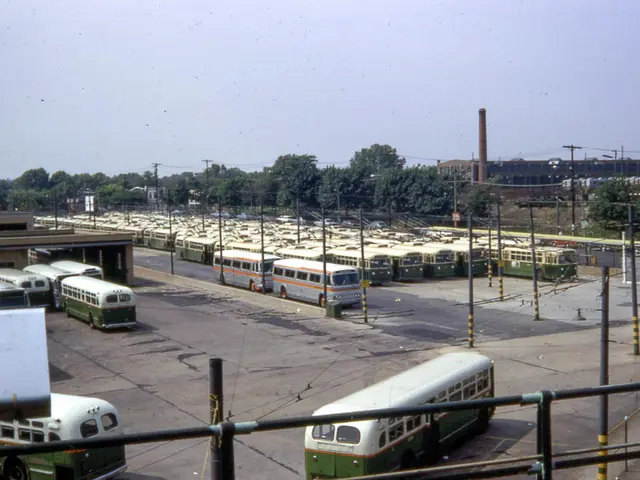Unraveling the Intricate Fabric of Southeast Asian Cultural Diversity: Delving Deeper into Regional Traditions
Southeast Asia, a region brimming with cultural diversity and historical richness, is a fascinating kaleidoscope of different traditions, languages, religions, and ethnicities. Let's delve into the heart of Southeast Asia's cultural smorgasbord, exploring the unique, mind-boggling aspects that make this region a breathtaking mosaic of human expression.
History Unfolds
Thousands of years of history have painted the cultural landscape of Southeast Asia. From the majestic ruins of the ancient kingdoms of Java and Angkor to the enduring legacy of European colonizers, each era has contributed its brushstroke to the region's vibrant tapestry. The diverse ethnic groups peppering Southeast Asia, from the Javanese and Burmese to the Filipino and Thai, have all blended their pigments to create this rich cultural soup.
Ancient Wonders
Southeast Asia was the canvas for some of the world's most influential civilizations. The Khmer Empire, renowned for the magnificent Angkor Wat in Cambodia, and the Javanese kingdoms, famous for the Borobudur Temple in Indonesia, left enduring masterpieces in stone. These epochs not only sculpted architectural wonders but also engineered social systems and governance structures.
Colonial Twists
The European conquerors—the Dutch, the British, the French, the Spanish—imposed their flavors onto the region as well. Colonial architecture, linguistic influences, and even culinary innovations remain visible in countries like Vietnam, Indonesia, Malaysia, and the Philippines. A multitude of cultures collided, creating a fascinating fusion in these regions.
Religious Mosaic
Religion weaves an intricate web through the fabric of Southeast Asian culture. Buddhism, Islam, Hinduism, and Christianity are the major players. Each religion has shaped the festivals, rituals, and daily lives of the people.
Buddhist Legacy
Buddhism, particularly Theravada Buddhism, holds a significant position in Thailand, Myanmar, Cambodia, and Laos. The religion's emphasis on spirituality and morality is evident in the many temples and monasteries dotting the countryside. Festivals like Songkran in Thailand and the Water Festival in Myanmar have deep Buddhist roots.
Islamic Influences
Indonesia and Malaysia are predominantly Muslim countries. Islamic traditions infuse their social customs, art forms, and festivals. Eid al-Fitr and the unique art of batik, often decorated with Islamic geometric patterns, showcase the impact of this influence.
Hinduism and Christianity
Hinduism, although a minority, holds a strong presence in Bali, Indonesia. Balinese culture, from its dance forms to temple ceremonies, is enveloped in Hindu tradition. The Philippines, on the other hand, has a predominantly Christian population, leaving an indelible imprint on their festivals and celebrations.
Linguistic Rainbow
Southeast Asia brims with linguistic diversity. Languages like Thai, Vietnamese, Bahasa Indonesia, Filipino, and Burmese are not merely communication tools; they also mirror the region's intricate history and cultural identity.
Literary Legacy
Each nation boasts a robust literary heritage. Epic stories like the Philippine's "Ibong Adarna," Indonesia's Ramayana adaptation, and the Thai national epic, "Ramakien," not only offer historical and cultural context but also continue to shape contemporary culture.
Artistic Symphony
The arts in Southeast Asia are as diverse as its cultures. Traditional dance, music, and theater forms harmonize uniquely with contemporary expressions to form the region's artistic symphony.
Dance and Melodies
Classical dance forms like the Thai Khon, the Balinese Legong, and the Filipino Tinikling are not only entertainment but also a means of storytelling, preserving history. Music, with instruments like the gamelan, the kulintang, and the koptoung, plays a significant role in ceremonies and social gatherings.
Theatre and Puppetry
Indigenous theater forms like Indonesia's Wayang Kulit shadow puppetry and the Vietnamese Water Puppetry testify to the region's artistic prowess. These shows combine mythological storytelling, music, and puppetry, offering insights into the spiritual beliefs and philosophies of the people.
Culinary Melting Pot
Southeast Asian cuisine is a reflection of the region's cultural diversity. The harmonious blend of indigenous ingredients with Chinese, Indian, and European influences has resulted in a rich culinary tradition.
Indigenous Flavors
Thai cuisine, known for its tantalizing balance of sweet, sour, salty, and spicy flavors, offers a glimpse into the country's complex history and cultural identity. The island of Bali and its spicy Adobo dishes showcase Philippine cuisine, while Vietnam's fragrant Pho bowls tell the story of Hanoi's melting pot culture.
Street Food Saga
Street food is inextricably linked to Southeast Asian culture. Not only does it offer a taste of the local cuisine but also a window into the daily lives of the people. The chaotic hustle and bustle of markets in Bangkok, Hanoi, and Manila offer adventures for the eyes, nose, and taste buds.
For more engrossing insights, check out our picks for the best online art courses or explore some great deals on headphones.
Southeast Asia's cultures are a vibrant collage of traditions, beliefs, and practices. From the grandiose monuments of ancient temples to the humble street food vendors, every aspect of the region's culture is an ode to its complex history and dynamic spirit. By delving into these diverse cultures, we gain not only knowledge but also a deeper appreciation for the beauty of human diversity and the interconnectedness of our world.
Celebrating Diversity in Festivals
Festivals in Southeast Asia are vibrant, colorful, and a testament to the region's rich cultural heritage. They are not merely celebrations but are equally important for preserving traditions and strengthening community bonds.
Signature Fetes
- Thailand's Songkran: Known as the Thai New Year, this festival is famous for its free-for-all water fights, symbolizing the purification and washing away of sins and bad luck.
- Vietnam's Tet: The Vietnamese New Year, traditionally falling around the same time as the Lunar New Year, is a time for family reunions and honoring ancestors.
- Indonesia's Bali Arts Festival: A month-long celebration on the island of Bali showcases the local artistic and cultural heritage, including traditional dance, music, and handicrafts.
These festivals, along with many others, are more than just tourist attractions; they are integral parts of the cultural identity of each country, providing a deeper understanding of their local customs and beliefs.
Timeless Apparel
Traditional clothing in Southeast Asia is as diverse as its cultures, each piece telling a story of history, status, and regional identity.
Elegant Attire
- Thailand's Chut Thai: Elegant and colorful, it's reserved for formal occasions and features different styles for men and women.
- The Philippines' Barong Tagalog and Maria Clara: The Barong Tagalog, a sheer, embroidered shirt for men, and the Maria Clara, a traditional dress for women, showcase the influence of Spanish colonialism.
- Malaysia's Baju Melayu and Baju Kurung: These traditional Malay attire are worn during festive occasions and symbolize national identity.
- Vietnam's Áo Dài: A long tunic worn over trousers, the áo dài reflects the country's fusion of Chinese and South Asian influences.
These traditional garments are not just costumes but rich representations of the region's history, status, and cultural identity, each tapestry telling a unique story.
Architectural Fusion
The architecture of Southeast Asia is a captivating meld of indigenous styles and foreign influences, reflecting the region's complex history and cultural diversity.
Unique Structures
- Colonial Buildings: In cities like Hanoi, Penang, and Jakarta, colonial buildings stand as symbolic reminders of European influence, subtly integrated with local architectural styles.
- Religious Structures: Be they Buddhist temples, Islamic mosques, or Hindu temples, these structures are not just places of worship but also cultural landmarks.
- Traditional Housing: Rural areas still boast traditional wooden houses, skillfully designed to accommodate local climates and lifestyles.
Southeast Asia's architectural diversity is a tangible representation of the region's rich historical depth and cultural complexity, providing a window into its past and present.
Modern Cultural Tides
While deeply rooted in tradition, Southeast Asia is a region of dynamic modern cultural expressions.
Creative Industries
- Film: The film industries in countries like the Philippines, Thailand, and Indonesia are thriving, producing movies that garner international accolades.
- Art: Cities like Singapore and Bangkok are booming centers for contemporary art, with museums, galleries, and artists showcasing local and international talent.
- Literature: Southeast Asian literature is rising in prominence, with authors like Andrea de Nordhera, Christina Mundy, and Le Dinh Quan captivating readers worldwide.
These modern cultural currents reflect the ongoing evolution of Southeast Asian cultures, blending traditional elements with contemporary influences.
Treasuring the Past, Embracing Future
As Southeast Asia continues to evolve, the preservation of traditional cultures and the embrace of modern influences are crucial for the region's cultural vitality. Efforts to protect cultural heritage through educational programs, cultural festivals, and museums play a significant role in maintaining cultural identity. Meanwhile, Southeast Asia's ability to adapt to the demands of the 21st century will ensure its continued relevance and vibrancy.
In conclusion, the cultural landscape of Southeast Asia is a breathtaking tapestry, woven with threads of ancient traditions and modern expressions. It's a region where the past and the future intertwine seamlessly, offering countless opportunities for exploration and celebration. Dive in, and experience the rich, dynamic world of Southeast Asian cultures.
Engaging with Southeast Asia's cultural heritage requires a journey through the vibrant and diverse strands of the region's ancient past and contemporary expressions. From exploring architectural wonders like the Khmer Empire's Angkor Wat or Java's Borobudur Temple to delving into the region's linguistic and literary heritages, each step unveils a piece of the intricate mosaic that shapes Southeast Asia.
As we immerse ourselves in the cultural travel experience, it becomes increasingly apparent that the region's traditions, lifestyles, and travel experiences are inextricably linked. Festivals, culinary delights, traditional clothing, and architectural styles serve as cherished cultural artifacts that reveal the history and identity of various ethnic groups. Yet, despite the significant presence of these rich cultural influences, Southeast Asia remains a region that embraces modernity and thrives on creative innovation.
The region's cultural-travel landscape offers a symphony of unique experiences — from the film industries of the Philippines, Thailand, and Indonesia to the booming contemporary art scenes in cities like Singapore and Bangkok. In exploring Southeast Asia's cultural heritage, one realizes that the past and future coexist harmoniously, with the region's ancient wonders providing a foundation on which modern expressions flourish. Whether through educational programs, cultural festivals, or museums, the preservation of traditional cultures while embracing modern influences is essential for Southeast Asia's cultural vitality and ongoing relevance.
As we continue to engage with Southeast Asia's cultural tapestry, we gain a deeper appreciation for the beauty of human diversity and the myriad ways in which cultures evolve. By understanding and celebrating the region's rich cultural heritage, we open ourselves to countless opportunities for exploration and connection, both within Southeast Asia and the world. So, embark on a cultural journey and explore the kaleidoscopic world of Southeast Asia.

